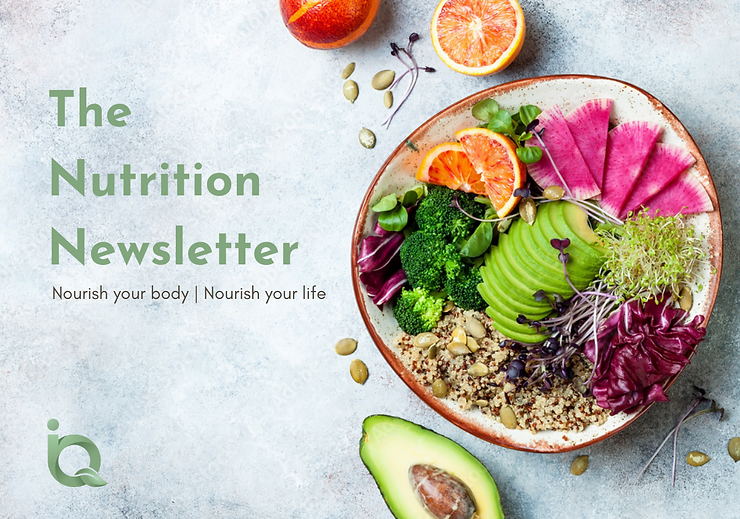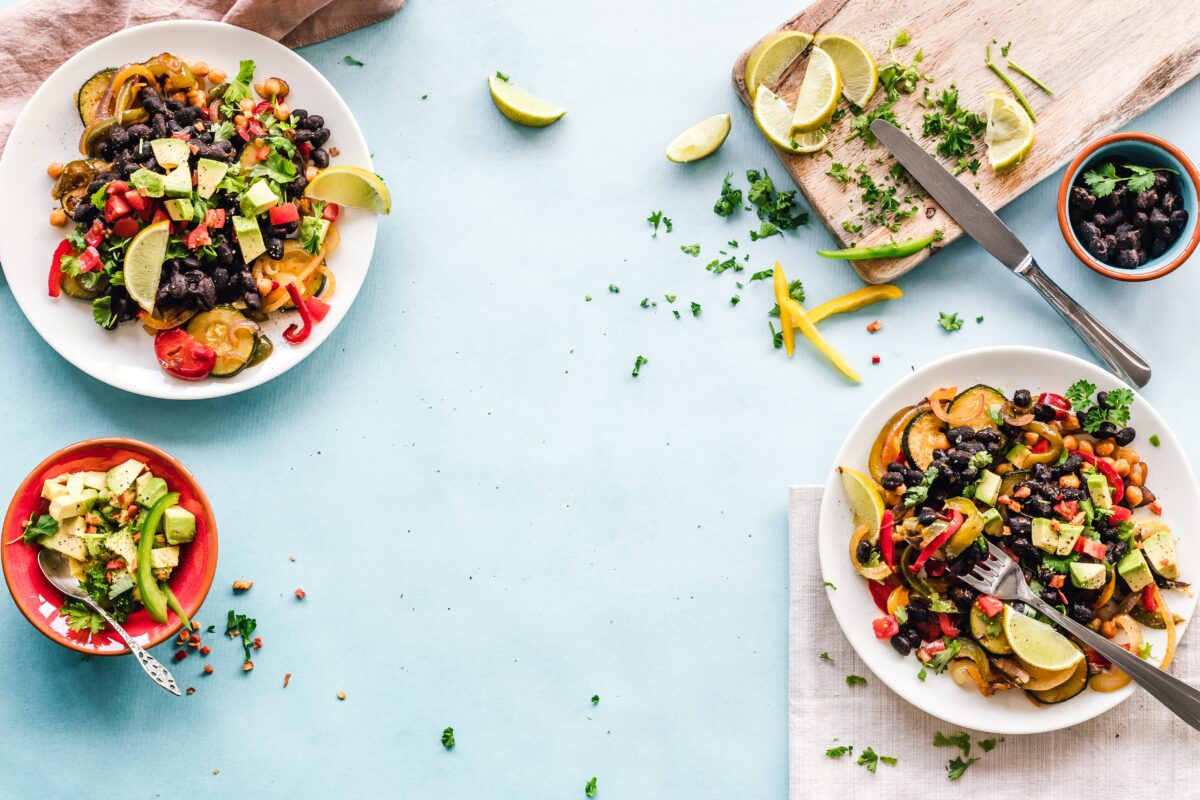Changing your lifestyle and dietary habits can be challenging. If anyone tells you it’s easy – they’re lying to you. But one thing’s for sure, it’s worth it. No matter where you’re starting out, there are a few key simple steps that will help you ease your way into healthful lifestyle modifications.
This article contains affiliate links, but rest assured, anything I recommend to you are things I’ve tried, used, or read myself and are items I believe are very useful to have on hand.
The internet makes it seem like some people have cracked the code to ultimate health and vitality as though it just comes naturally – like they’ve got it all figured out. But really, no one has anything figured out. We’re all just doing our best.
It’s perfectly ok to not know where to start. We are creatures of habit – products of our culture and environment. We tend to eat and live the same way that we were raised. It’s what we know.
To share a bit of my personal story, I got into functional medicine for a couple of reasons, one reason is because I wanted to help others experience the same health transformation I was able to with healthful dietary and lifestyle changes.
Another reason is because I love food. I love brownies, mac and cheese, salt and vinegar chips, creamy pastas, and cream cheese frosting. There’s no denying that ultra-processed, carb-heavy/fat-rich, and sugar-laden foods taste good; there’s no denying that giving up and avoiding these foods is HARD. Of course it’s hard, these foods are designed to make us want to keep eating them and want to seek them out when we’re not (see the book recommendation further down).
But I (and many others) do avoid them, we also prioritize sleep, movement, and stress management. We make a conscious effort each day to put our health first – it’s not always easy. It’s much easier in the moment to eat the cake or skip the gym. But one thing’s for sure, making. the tough choices in the moment are much easier than a lifetime of being unwell and sick.
Committing my career to helping others make these hard changes holds me accountable, it forces me to practice what I preach by prioritizing my own health – it’s part of the Mindset that gives me purpose. I certainly didn’t get to where I am now overnight and I’m still far from perfect. It’s a linear journey; some days are better than others, and it’s a constant learning process.
My nutrition and lifestyle transformation began in 2016 and my starting point was an ultra-processed, deep-fried, and microwaved standard American diet (SAD) on top of poor sleep habits, and little physical activity. A lot has changed since then – mostly as the result of small, incremental changes and choices made each day. I don’t always feel 100%. Some days are better than others with my practices, but I do feel much better overall, and my health is far more improved from where it was in 2016 (I was able to come off of my insulin pump as a byproduct too).
I share this with you because I truly believe that ANYONE – no matter their starting point – can experience the same health improvements in their life. No matter your socioeconomic status, age, gender, starting weight, exercise experience, cooking skills, or any other factor, anyone can do it. The only necessary prerequisite is the Right Mindset. If you have that, you have all that you need.
The Foundation of Health
Let’s start with an understanding of the essential foundational elements of health.
This document illustrates the interconnectedness of each of these facets and how they impact one another. It’s not sufficient to cherry-pick a few areas to focus on while neglecting others (i.e you can’t out diet lack of movement or poor sleep). Not pictured is how your Mindset is analogous to the environment that the tree is in. Is it lush, fertile, and rich? Or is it barren, dry, and depleted?
It’s necessary to prioritize each pillar, the tools and tips herein will help you manage some of the easy-to-address factors at your own pace in simple, non-overwhelming ways.

#1: Set the Right Environment
Nothing will make healthful change easier than creating an environment that supports the changes you want to make.
Your Internal Environment
Let’s get real. change is hard, and it’s going to be uncomfortable at times, but with the right mindset, anyone can do it. What’s most important for pushing through when things get tough is having the right expectations both for yourself and for the journey ahead.
What are the outcomes you want to see?
Once you have an aim, you can start to see the direction you’ll need to take to get there. This looks like setting small, incremental goals that will compound to help you reach your big-picture goals. These will be different for everyone so you have to determine what this is for you.
Some examples of this are the following:
- Outcome: weight loss | Small goals: losing X amount of weight or inches each week, 2 weeks, month, etc.
- Outcome: Gut health | Small goals: eating foods that support a healthy gut, Identifying and removing “triggering” foods, digestive enzyme support, and taking probiotics.
- Outcome: Blood sugar management | Small goals: weight loss, balancing macro intake and timing, giving up certain foods, improving insulin response.
What are the things you’re willing to do to get there? This is likely the toughest part and where most people throw in the towel. It takes effort, dedication, and getting uncomfortable sometimes to change up your normal routine. No one is going to do this for you, so ask yourself what are the non-negotiables? What are you both willing to and not willing to do?
Some of those things may include the following:
- Outcome: Weight loss | What it takes: nutrition tracking, following a meal plan, meal prep, giving up certain foods, eating more fruits and vegetables, no more night-time snacking, etc.
- Outcome: Gut health | What it takes: Taking probiotics and digestive enzymes daily, avoiding certain foods, trying new foods or recipes, following a therapeutic diet plan for a short intervention, etc.
- Outcome: Blood Sugar Management | What it takes: Glucose monitoring or wearing a CGM, cutting out processed carbs, reducing overall carb intake, exercising to promote a healthy insulin response, and taking supplements like Glucose IQ or medications if necessary.

#2 Nourishing Your Body to Support Health
After you’ve established a mindset that supports and motivates you to see through these changes, It’s time to tackle how you nourish your body.
What does Your Food Environment Support?
Your food environment should support the changes you want to make. If you want to eat less processed foods, fewer sweets, or cut back on potato chips, it will be much easier to avoid these foods if they are not readily available to you (i.e. in your pantry).
The same is true for having healthful foods available for when you need a quick snack or as ingredients for a health-promoting meal instead of the common ultra-processed pantry staples. When we’re hungry, we naturally grab foods that require no prep, are easy to eat, and are easy to find. Here are some great ways to easily make healthful snacks and meals your regular go-to’s:
1. Keep ready-to-eat foods on hand at all times, store them front and center at eye level in the pantry or fridge. Some examples include:
- Berries
- Nuts and seeds
- Single-serve sugar-free/fat-free yogurt or cottage cheese cups
- Lunch meat or shredded rotisserie chicken
- Single-serve tuna or salmon pouches
- Snack veggies like baby carrots, cherry tomatoes, celery sticks, broccoli florets, etc
2. Prep meals ahead of time over the weekend or order healthful pre-made meals.
3. Not a meal prepper? Keep items on hand that make for easy meal prep in 10min or less such as the following:
- Frozen quinoa or grains to make these quick and easy protein power bowls.
- Pre-washed salad greens + deli meat, tuna/salmon pouches, or rotisserie chicken for a quick salad
- Chop your veggies ahead of time so they’re ready to use atop a salad or bowl or as ingredients in other dishes *PRO TIP a mandoline slicer like this one that I have a garlic press can cut your veggie chopping time in half*
Here’s a short e-book that will walk you through 4 simple steps for resetting your pantry:
Food and Social Events
We also want to be mindful of the food environments that we put ourselves into. Including restaurants, parties, and social gatherings.
I’m not saying that you should avoid eating out and social events from here on out – not at all. Social connection is a vital part of a healthy, fulfilling life. However, to help avoid some of the less-than-good-for-us foods that tend to be at these events, here are some easy strategies that you can implement ahead of time to keep you on track with your health goals:
- Eat beforehand
A great strategy for get-togethers that will be serving hors d’oeuvres, snacks, and finger foods. This will help prevent overeating. - Bring a new healthy and tasty recipe
For pot-luck sort of gatherings. This is a great way to encourage loved ones to also adopt more healthful habits in their lives and a way to showcase how healthy foods don’t have to taste bland and boring. Check out my Pinterest board for recipe ideas.
About your commitment to health, ask for their support, and encourage them to join you. Along the theme of #2, this is an excellent way to boost social support and accountability for yourself. These types of lifestyle changes are also easier and more fun when done as a group effort with friends or family.
When it comes to restaurants, this is a no-brainer. If someone wanted to drink less, they don’t tend to go to bars. Cleaning up your nutrition should be thought of in the same way (after all, the act of eating food can itself become an addictive-like behavior. Read ‘Hooked: Food, Free Will, and How the Food Giants Exploit Our Addictions‘).
Follow these steps to avoid the all-too-alluring temptations of those sugary, fatty, salt-laden commercial restaurant foods:
- Avoid fast-food chain restaurants, like:
Mcdonald’s, Burger King, Taco Bell, Dairy Queen, Bojangles, Captain D’s, KFC, and the like. There is absolutely nothing on any of these menus that could be considered even relatively healthy (not even their so-called salads). I’d argue that most of the “food” on these menus barely count as food. I get it though, sometimes we just have to get something fast and easy for the family. Try these restaurants instead for quick, cleaner menu options: - What to order at Chick-fil-a
Try a grilled chicken sandwich on a wholewheat bun, grilled chicken wrap, a salad, or grilled nuggets. Use a vinaigrette dressing or lemon juice rather than cream-based or sugary dressings or sauces. Have a soup, fruit cup, or side salad instead of fries. - Menu Options at Panera Bread or Atlanta Bread Company
Avoiding the plethora of pastries and pasta, have any of their salads or grain bowl options. A sandwich with light mayo on whole-wheat bread is a good choice too, have an apple, salad, or a broth-based soup as the side instead of chips or bread. - Ordering at Chipotle, Moes, or Q-Doba
Stick to salads or bowls here for lighter options, go light on the dairy toppings (cheese and sour cream) or skip them altogether, all veggies options are a good add-on, avoid pairing carbs together i.e if you do rice, go light on the bean, chips, or starchy vegetables. Have Guacamole instead of queso. - Any Mediterranean restaurant like Zoe’s Kitchen, Tazikis, Pita Street Food, etc.
Go for a bowl or a gyro on a whole-wheat pita, grain bowls, salads, or grilled chicken/fish with veggie sides. Avoid pairing two carb-heavy sides together as mentioned above. - Any Salad/Bowl style restaurant like Kale Me Crazy, Cava’s, UpBeet, Chopt Salad Co. Freshii, etc.
Anything on the menu here is free game. These places offer some incredibly tasty meals. You’ll be surprised how good veggies can taste. - Additional Restaurant Resources
If you find it hard to avoid the french fries, mac and cheese dishes, fried chicken, greasy burgers, and pastries when running through drive-thrus, commit to spending the 5 or so minutes it takes to place a pick-up online or call your order in. I get it, it can be hard when those cookies are staring back at you to not throw one in with your order, pre-ordering removes the temptation and helps keep you on track with your goals. Pro tip: do this with grocery shopping too if you too often find that Oreos and potato chips mysteriously find their way into your shopping cart.For any restaurant option, order a sugar-free drink i.e unsweetened tea (use stevia, monk fruit, Splenda, etc.), a diet drink, or water. *Yes, I am a proponent of sucralose and diet drinks over sugar-sweetened beverages. Some will say this is heresy in the health world but in the spirit of compromise and baby steps, this is WAY better than the 60+ grams of added sugar in a Coke, Sprite, or Dr. Pepper*
Hydration
I’ve covered hydration in-depth in a previous article. Here’s the link in case you missed it.

#3: Movement
Your body has to move. Systems fall apart without it.
While I do take heavy nutrition focus with clients, movement is also a staple for everyone that I work with. You can’t out-diet a sedentary lifestyle, it’s that simple.
It really doesn’t matter what it looks like, as long as you’re spending at the very least 150 min per week getting your heart rate up to 50-70% of your max heart rate (220 minus your age), you can do whatever movement feels best for you. It can be anything from group fitness, dance, weight lifting, running, walking, yoga, outdoor recreation, water aerobics, or anything else that makes you feel good, get up and get moving.
Here are just a few examples of what movement does to keep your body’s many metabolisms functioning:
- Regulates blood sugar levels and increases insulin sensitivity (1)
- Decreases and improves depression (2)
- Increases bone mineral density and prevents osteoporosis (3)
- Increases your metabolic rate via increasing muscle mass to promote longevity and healthy weight maintenance (4,5)
- Improves sleep (6)
- Improves stress management (7)
- Prevents metabolic diseases (8)
- Helps you live longer (9)

#4: Sleep
Another non-negotiable is prioritizing your sleep.
We all know that 8hr is important and we know how bad we feel when we don’t get it. It’s easy to let our sleep quality slide when life gets busy or when we experience stress, but there are many easy ways to help ensure your health doesn’t suffer due to lack of sleep:
The Foundational Sleep Practices
- Plan your timing of the following day with sleep at the START of the day rather than the end (i.e, plan for your day to start at the appropriate bedtime the night before to allow 8hrs in bed)
- Go to bed and wake up at the same time each day (i.e avoid staying up later and sleeping in on the weekends).
- Avoid eating food 3hr before bed (this shifts your circadian clock by a few time zones!)
- Keep your room dark, cool, and quiet.
More Advanced Sleep Practices
- Avoid caffeine after 12 pm.
- Do not work out or do cold exposure/ice baths within 4hrs prior to your bedtime (this can overstimulate your nervous system and keep you awake).
- Do you have sleep apnea or do you snore? This can very much impact and harm your quality of sleep, metabolic function, cognitive function, and daily energy levels (yes, even just snoring without sleep apnea is detrimental to health)(10). Try mouth taping, myofascial therapy with something like this app, or this diaphragm-strengthening device.
- Take a warm shower before bed.
- Practice stress-management techniques
- Align your circadian rhythm with the day and night cycle:
- Get 15 min of sunlight exposure when you first wake up (i.e. enjoy a cup of coffee outside)
- Get 15 in of sunlight exposure as the sun is setting (i.e take an evening walk).
- Stop eating 3hr before bedtime and wait 1hr after waking to eat your first meal.

#5: Stress
As you can see, these three pillars are very closely intertwined with one another, exercising supports sleep and stress, while managing stress improves sleep and quality of life. It’s hard to focus on one without simultaneously supporting another (I like to call these “beneficial side effects”).
“Managing stress” we all know is not as simple as “don’t think about it”, “meditate”, “take a deep breath” or any other cliche stress-management technique. While these certainly can help improve emotional resiliency, it’s clearly not always that easy.
There are several “non-conventional” ways that we can manage stress as well as make stress work for us. The following are some excellent practices that help manage and balance stress in our life. The most important thing is determining which practices work best for YOU.
- Exercise is a great way to let off steam and manage stress
- sunlight exposure
- meditation
- a walk in nature (this is also great for your immune system)
- playing with a dog
- reading a good book
- yoga
- prayer
- journaling
- a massage
- Ice baths and cold exposure
- Sauna use
- anything else that helps you relax.
I’m a big fan of biofeedback technologies that track your daily heart rate variability (HRV) as this is an overall reflection of how your body is managing and recovering from stress on a daily basis. You can use this feedback to appropriately adjust your daily behaviors and practices to support optimal nervous system recovery.
I personally wear the WHOOP for a daily assessment of my recovery, sleep, HRV, activity strain, and other health markers. It’s great for determining which practices and behaviors improve or negatively impact stress resiliency. I highly recommend it to anyone interested in dialing in sleep, stress, and movement. Get a free WHOOP 4.0 and one month free when you join with my link.
Addressing The Other Pillars (Leaves and Branches):
Addressing more advanced health imbalances often requires the guidance of a healthcare professional to ensure safety and efficacy.
The great news is that often by cleaning up your diet, balancing stress, regular daily movement, and prioritizing your sleep, many other health issues will naturally improve on their own (those “beneficial side effects” again).
If you’re dealing with Metabolic imbalances (blood sugar imbalances, gut issues, cardiovascular concerns, liver issues, brain fog, inflammation, etc.) I challenge you to start with these 5 foundational pillars (Mindset, Nutrition, Stress, Sleep, and Movement) to see how your health improves.
If you’d like to take a more advanced approach to begin addressing Metabolic imbalance now, feel free to schedule a complimentary consultation call to learn how we can approach this together via functional medicine.
If more detailed nutrition counseling, meal planning, health caching, and personalized lifestyle guidance are what would best help you get started, I would be happy to assist here as well. Learn more about my 90d health and wellness program here.
As always, I hope you’ve enjoyed and I wish you well.





















